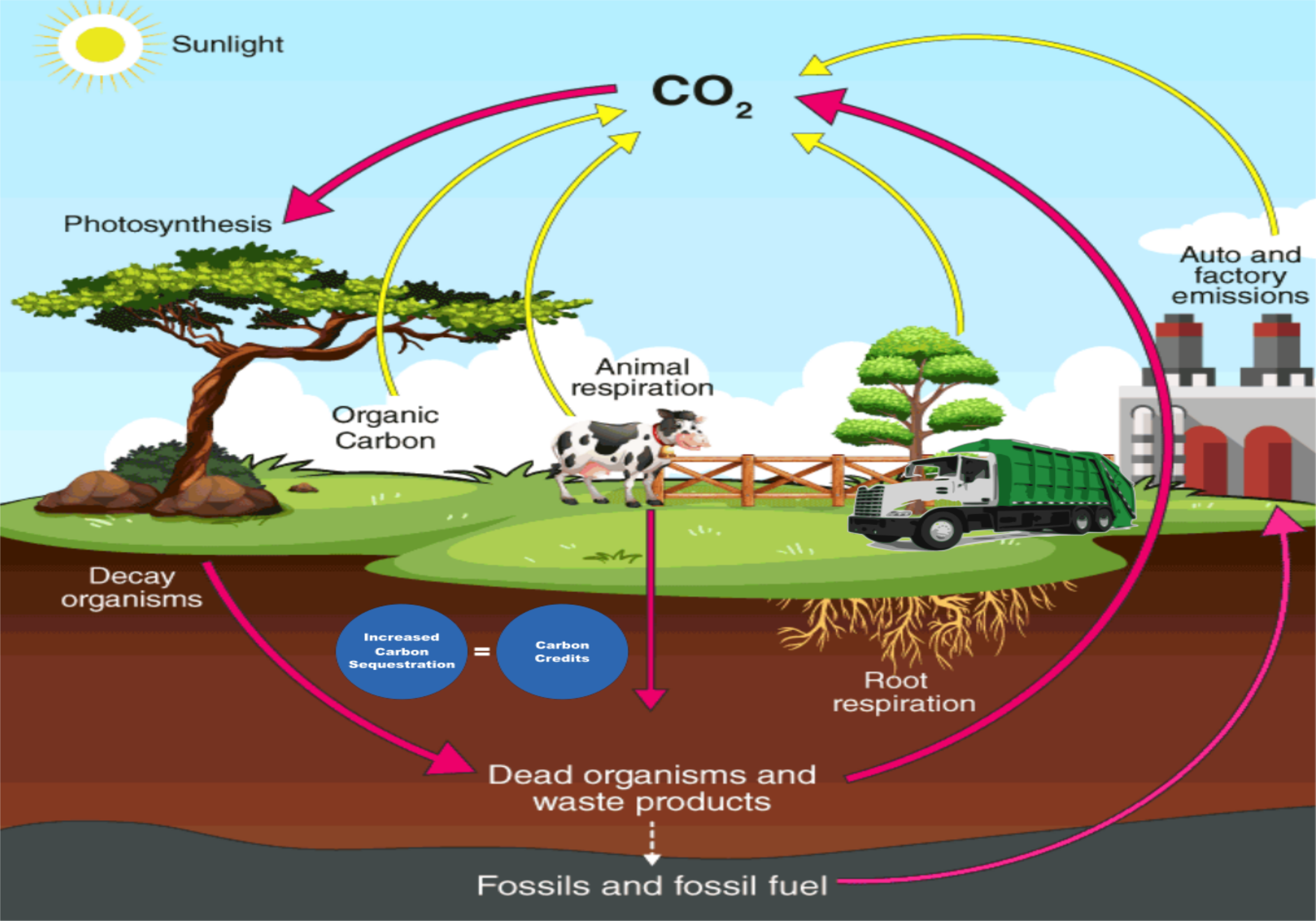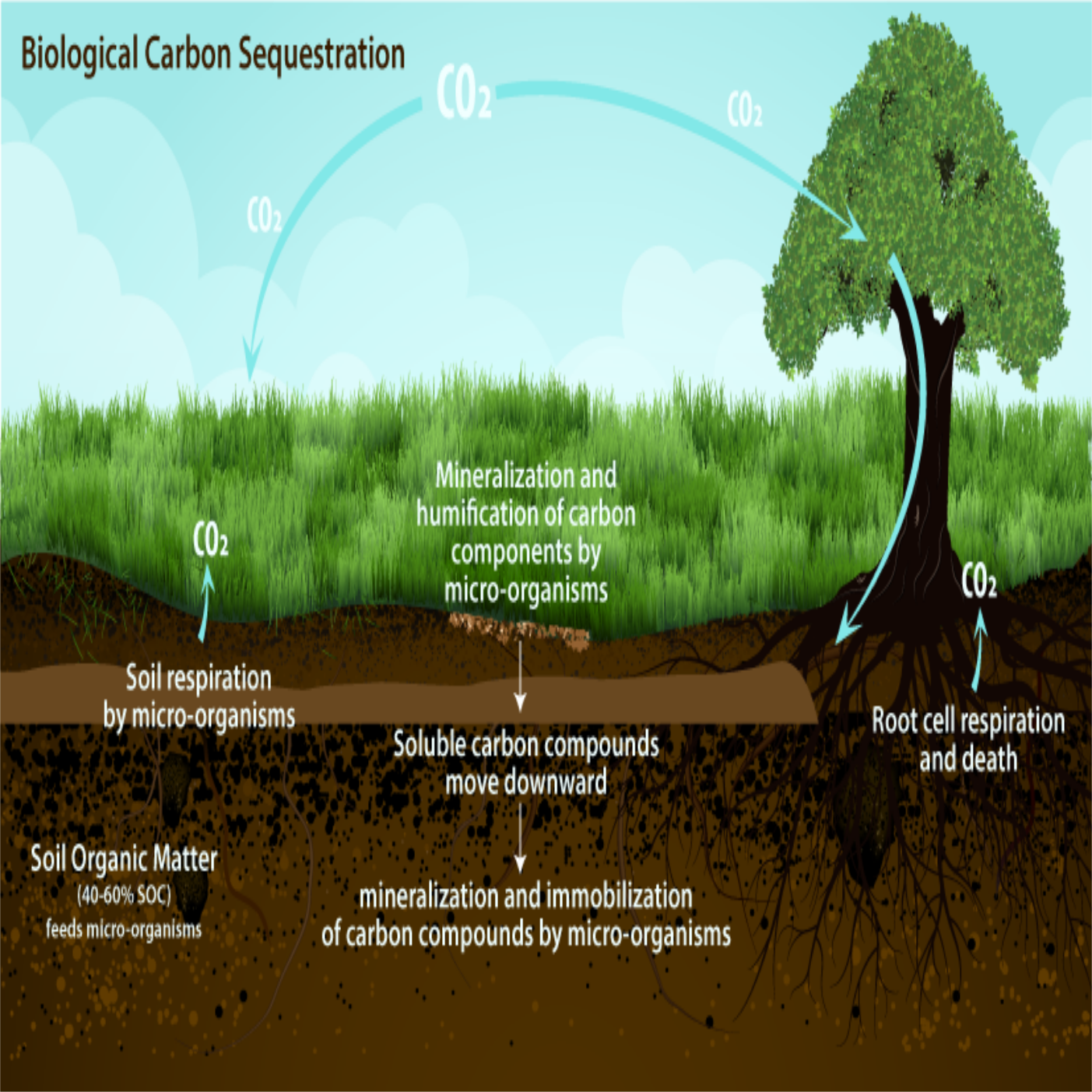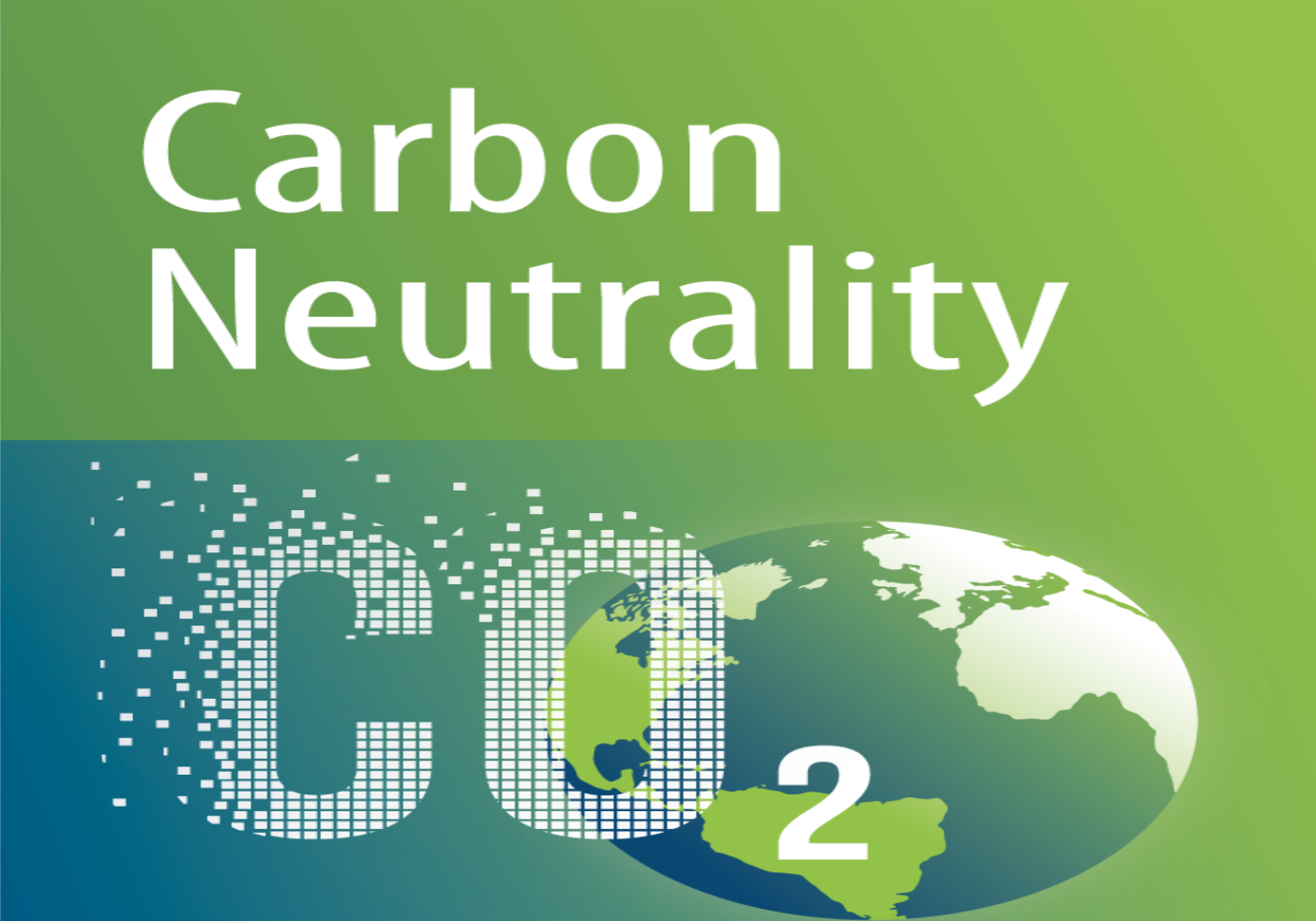
Understanding The Carbon Cycle
- Understanding the earth’s carbon cycle is the key to understanding the problem with carbon and the atmosphere. For millions of years, the cycle has been regulating the amount of CO2 in the atmosphere which in turns has a large impact on the climate.
- Plants need CO2 for photosynthesis and plants put carbon back into the soil where it stays for millions of years and in some cases ends up in fossil fuels.
- When man arrived on the scene he upset this delicate balance. In man’s quest to improve his standard of living, he begins burning carbon-based materials (like wood) and extracting fossil fuels (OIL). Today, petroleum-based products touch our lives in many ways every day. The carbon from petroleum is either in or used to produce most of the goods and services we use daily.
- So where’s the problem? Using oil as an energy source (burning it) combines the oxygen from the air with the carbon from the petroleum producing massive amounts of CO2 which ends up in the atmosphere. This creates a greenhouse gas that insulates the planet.
- Burning petroleum (HC) combines it with oxygen (O2) to produce H2O and CO2, both greenhouse gasses. The H2O is evident on cold days as it is visible in the exhaust of vehicles.

What is Carbon Sequestration
- Simply put, it is putting the Carbon back into the soil. Using plants, trees, grasses, row crops, we can get some of the carbon back into the soil using natural processes.
- Greenfoot and Continuum Carbon Services (CCS) work with landowners in Canada and the US under the umbrella of an approved project plan with approved methodologies to increase the amount of carbon plants put into the soil (sequestration) to produce high-quality verifiable Carbon Offset Credits for companies wishing to become Carbon Neutral.
- Plants use CO2 in the process of photosynthesis putting some of the carbon back in the soil and putting O2 (oxygen) into the atmosphere. Carbon credits are produced when land management practices “increase” this sequestration helping to offset the additional CO2 we are putting into the atmosphere every day. These land management practices include crop rotation, reduced nitrogen usage, irrigation, and the use of a bio-stimulant.
- Ultimately, it is about taking carbon out of the atmosphere and getting more of it back into the soil to reduce the effects of CO2 on our climate.

What Does It Mean To Be "Carbon Neutral"
- Being Carbon Neutral involves more than just buying Carbon Offset Credits. It involves examining a company’s entire carbon emissions or “carbon footprint” and developing a plan with a qualified certification company to become carbon neutral.
- For garbage haulers the majority of their carbon footprint is fuel usage, however, a company must also consider electricity use, heating buildings, commuting distances, travel, etc. to get the full picture. Once an assessment is done and a plan developed which typically involves more than just purchasing carbon offsets, you are on the road to becoming “Carbon Neutral”